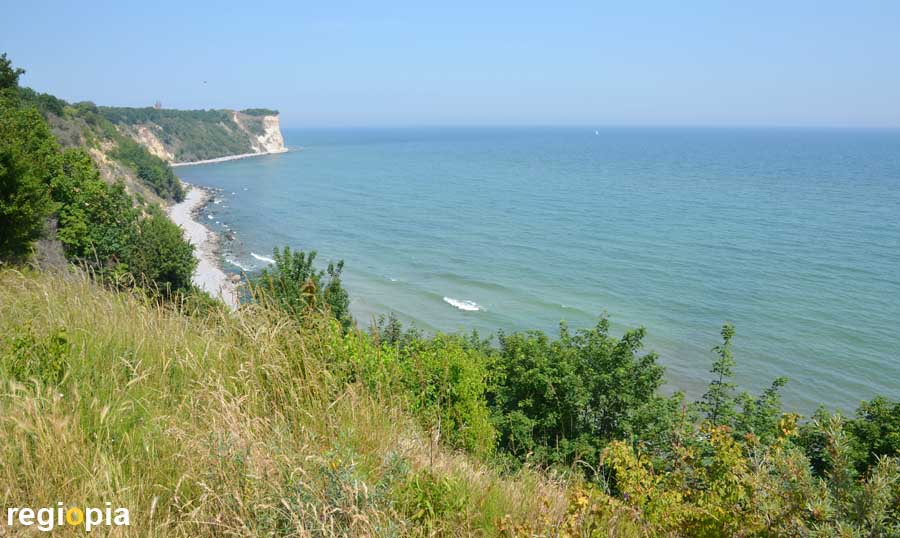
Cape Arkona
We start the journey through the island of Rügen in the far north at Cape Arkona. Those arriving by car should park the vehicle at the collective parking lot in Putgarten. From here, tourists can take a small train to Cape Arkona and the village Vitt. You have to pay for parking and the train. It is possible to walk the distance of around 2 kilometers to the Cape. However, the route is relatively boring and takes about half an hour. At Cape Arkona there is a lighthouse, the Schinkel tower, a bunker with a museum and a direction finder tower as well as several restaurants. You can climb the two towers and have a look from the observation deck over the island of Rügen and the Baltic Sea.
Cape Arkona is one of the most famous attractions of Rügen. If you want to see the 40 m high cape you should take the path to Vitt, from which you can see Cape Arkona best.
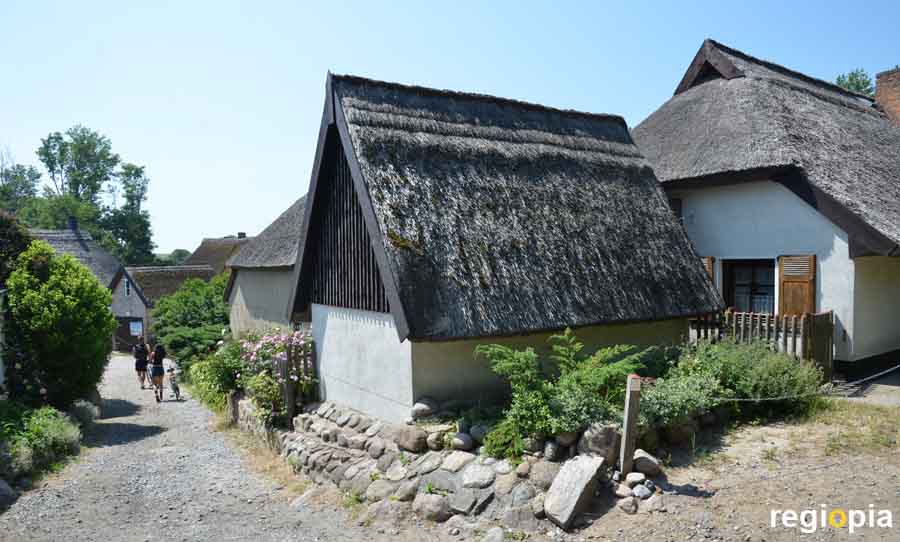
Vitt
It is around 1.4 kilometers from Cape Arkona to Vitt. Sturdy footwear is required to walk on the coarse gravel path. The fishing village of Vitt is right on the pebble beach. The few houses are small and thatched. There are a couple of restaurants and cafes. Vitt is famous for its smoked fish that you can buy down on the beach. The smoked fish looks like a lump of brown fish. The strange looking fish is juicy inside and therefore very tasty.
Vitt was already inhabited by the Slavs, the village was mentioned in a document in 1290. From the Vitter Chapel you can take the tourist train back to the collective parking lot in Putgarten. It is about 2 kilometers on foot.
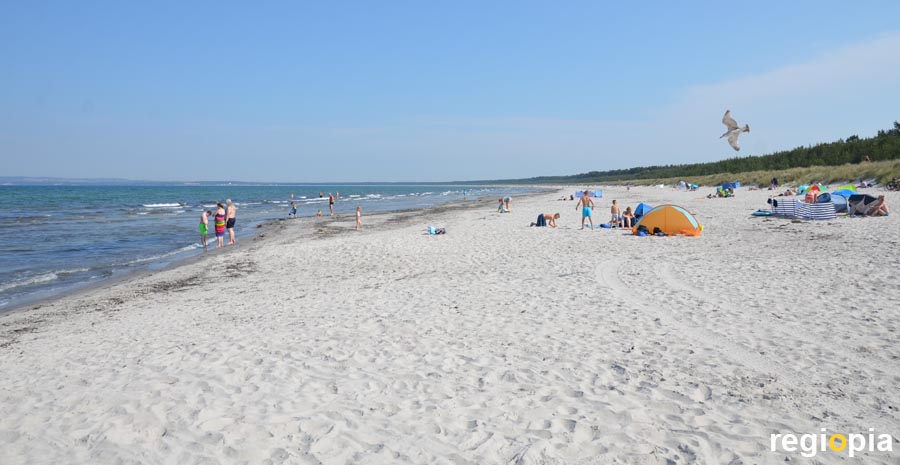
Glowe Beach
Between the two steep coasts of Cape Arkona and Jasmund National Park there is an approximately 11 km long sandy beach. In the north the beach borders on Juliusruh, in the south on Glowe. The beach is located in a pine forest with parking bays. There are no changing rooms, showers and restaurants. If you go to the beach here, it's best to bring everything by yourself. There are restaurants and accommodation in the two small towns. Glowe is a bit bigger than Juliusruh and accordingly has more to offer. This beach is the longest sandy beach on Rügen.
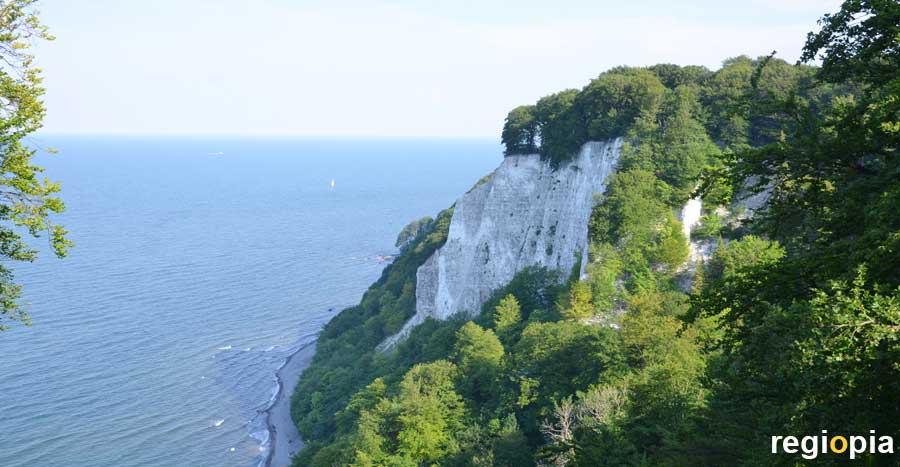
Königsstuhl National Park
The Königsstuhl National Park is the most famous sight on Rügen. The steep chalk cliffs were made famous by the painter Caspar David Friedrich. The picture "chalk cliffs on Rügen" was created in 1818 and is one of the best-known works of German Romanticism. The picture hangs in the Winterthur Museum in Switzerland.
Anyone wishing to visit the Königsstuhl National Park must park their vehicle at the Hagen car park for a fee. From here, shuttle buses go to the main entrance of the park and the visitor center. From the Hagen car park to the visitor center it is a 3 kilometer walk through the hilly forest landscape. It is around 250 m from the bus stop at the visitor center to the famous chalk cliff.
The Königsstuhl is one of the most beautiful viewpoints on the chalk cliffs and the Baltic Sea and one of the most beautiful places on Rügen.
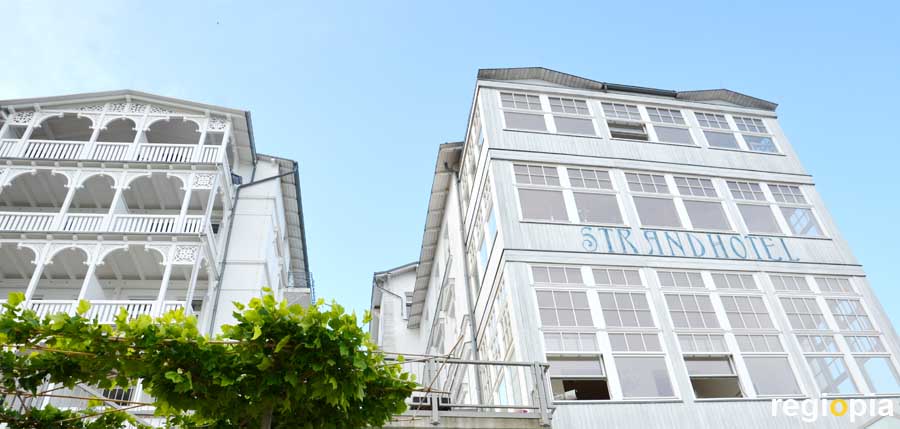
Sassnitz
Sassnitz is the largest port on Rügen, from here the ferries go to Trelleborg in Sweden. Sassnitz has around 9,000 inhabitants and is the second largest city on the island. Although Sassnitz is a resort, the city cannot compete with the other seaside resorts because it does not have a sandy beach. In the small old town there are a few pretty houses with wooden facades, but overall Sassnitz does not make a sophisticated impression. The waterfront needs to be redesigned urgently. Worth seeing is only the city harbor, the submarine HMS OTUS and the Kurmuschel by Ulrich Müther.
ads
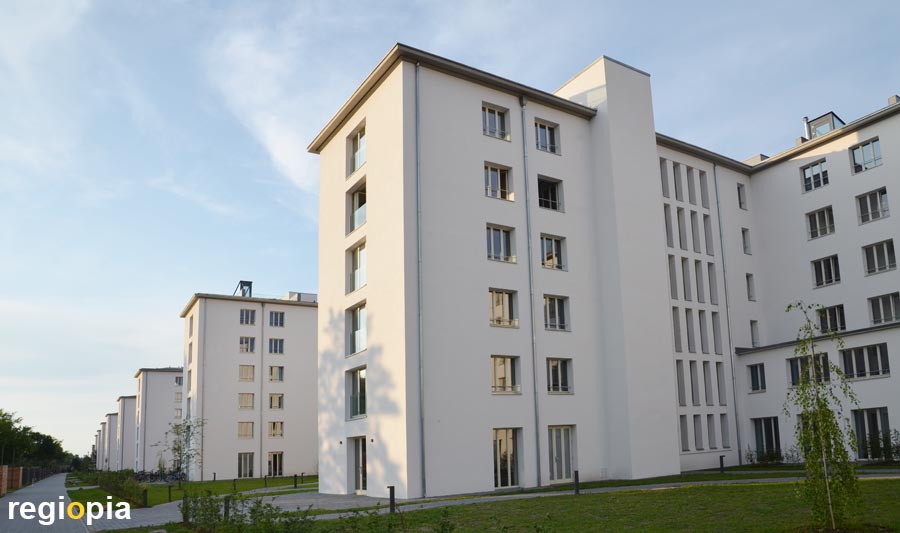
Prora
Prora was planned as a KdF seaside resort of Rügen for 20,000 vacationers. "Kraft durch Freude" (Strength through Joy) KdF was a National Socialist recreational program. A 4.5 km long building complex was planned on the Prorer Wiek bay, north of Binz. The architect Clemens Klotz from Cologne supplied the monumental design. The first construction phases was built between 1936 and 1939. The project was stopped due to the war. About half of Prora was completed. The festival hall and the pier in the middle were not built. Two residential wings were built in the north and two in the south of the center.
After the war, the GDR army used the facility as barracks and built further buildings behind the Prora seaside resort. After the reunification, Prora was privatized. Individual parts of the building were sold and renovated by investors. Since then, apartments and hotels have been located in the complex. Balconies were installed on the long facades of the beach, thereby loosening up the monotonous strictness of the Nazi architecture.
Dealing with the history of Prora is still difficult if you want to protect the ensemble or change it with new architecture. In terms of urban planning, the center of the complex, a central square with cafes and shops, is still missing. The Prora Documentation Center deals with these and similar questions, hit the link for more information.
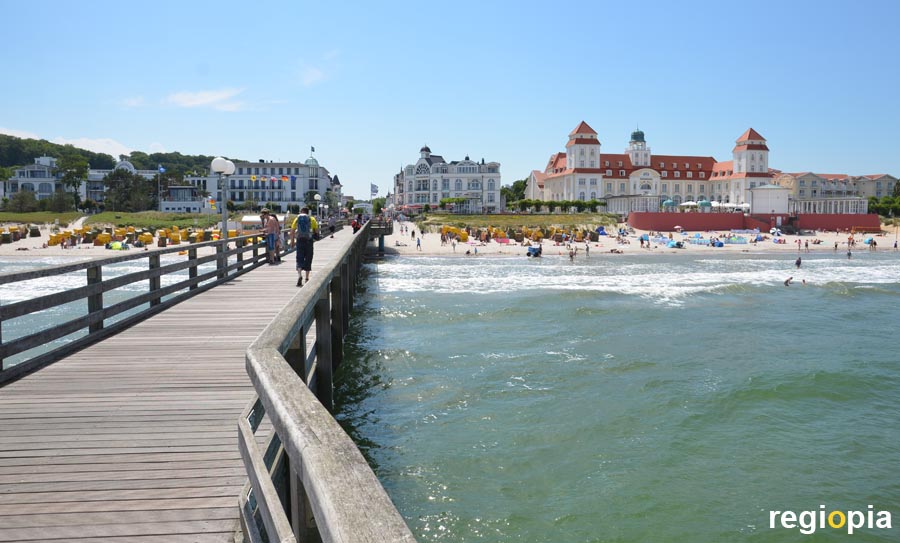
Binz
Binz is the most famous Baltic Sea resort on the island of Rügen. The small town with barely 5,000 inhabitants is visited by millions of tourists in summer. On the one hand, this is due to the good transport links by road and rail to the mainland, but mainly due to the more than 9 kilometers long sandy beach that stretches from Binz to Sassnitz. Binz has also managed to become a sophisticated seaside resort thanks to its spa architecture. Binz is elegant and offers many good restaurants and hotels.
The main attraction of Binz is the 370 m long pier, which was built in 1994. From here you can see the Kurhaus that opened in 1908. It was built according to the plans of the Berlin architect Otto Spalding. The Kurhaus is located directly on the beach promenade and near the busy main street that leads towards the train station.
Binz was a small town on the Baltic Sea until swimming in the sea became popular around 1870. Back then, the trip to the Baltic Sea was expensive and only the rich could afford a vacation at the shore. The first hotel in Binz opened its doors in 1876. Industrialists built luxurious beach houses that still shape the style of spa architecture on the German Baltic coast.
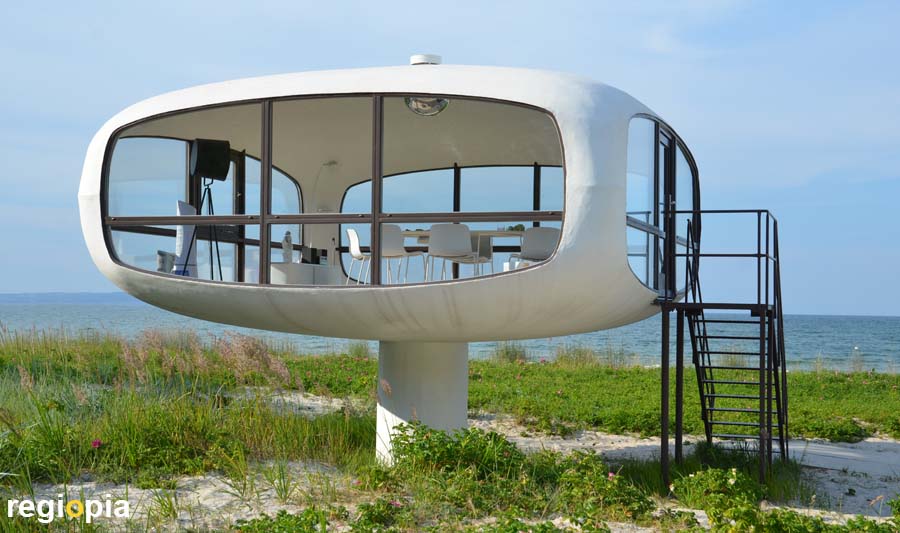
Müther-Tower
Ulrich Müther (1934-2007) was a civil engineer from Binz, who built numerous concrete shell structures, particularly in the GDR but also worldwide. The Müther tower on the beach in Binz was built in 1968 as a lifeguard station. Since the renovation in 2018, you can get married in the Müther Tower. The filigree concrete structure stands about 450 m southeast of the Binz pier in the dunes. Other structures by Müther on the Baltic Sea can be found in Glowe (Ostseeperle restaurant), Rostock-Warnemünde (Teepott restaurant) and Sassnitz (Kurmuschel).
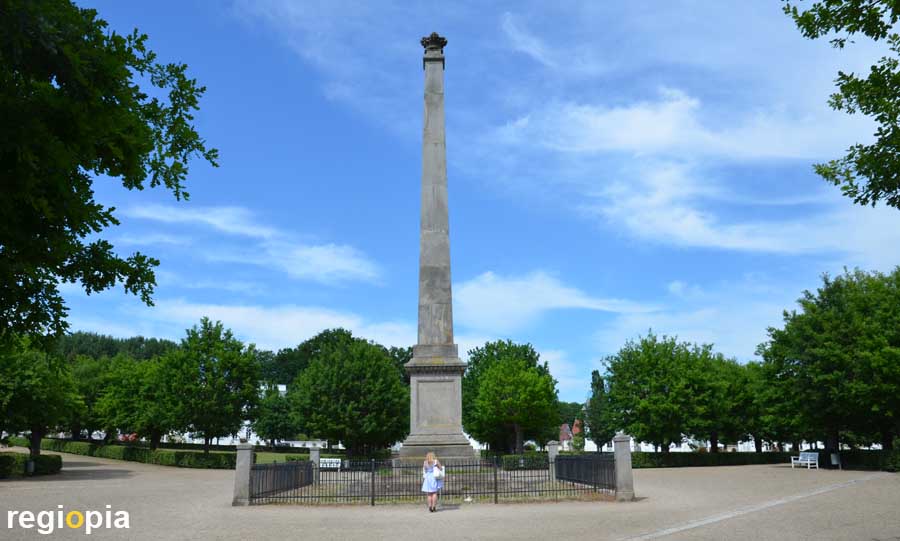
Putbus
The town of Putbus was built in 1810 by Prince Wilhelm Malte I as a baroque town. To the north of the palace park, he had a round square created with an obelisk in the middle. The square is called Circus and is reminiscent of the Royal Crescent in Bath, England. Malte I. wanted to attract bathers to Rügen and built the first bath house on the island in Lauterbach. The Hotel Badehaus Goor is located about 2.5 kilometers southeast of Putbus on the Baltic Sea. Putbus Castle was blown up by the GDR in 1962. Other sights of Putbus are the theater and the orangery both built in classical style.
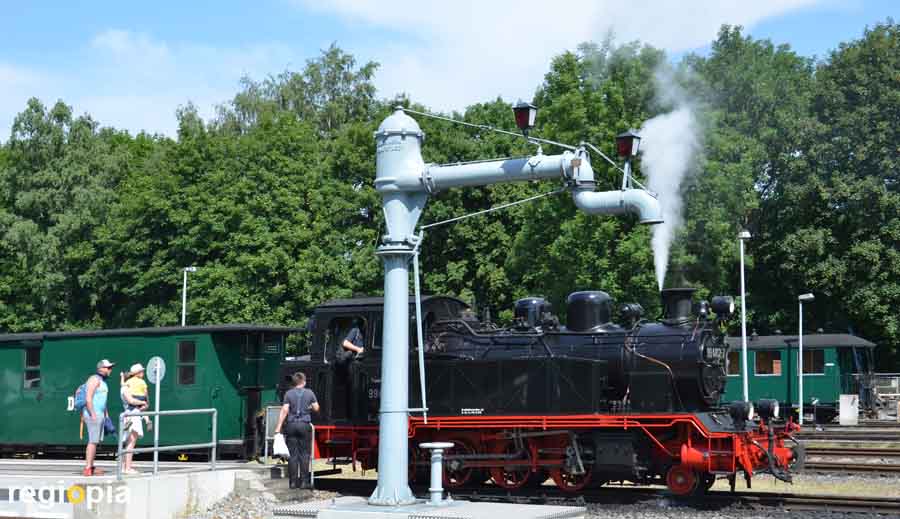
Raging Roland Steam Train
Raging Roland is the most famous tourist attraction on Rügen. The steam locomotive was opened by Prince Wilhelm Malte I in 1895 as a beet train. The train transported crops to Putbus, where they were loaded onto freight trains to Stralsund. In 1967, the railway's agricultural operations ceased. The narrow-gauge railway was privatized in 1996 and reopened for tourists. Since then the railway has been running between Putbus and the seaside resorts from Binz to Göhren.
Timetables and prices see link to Rügensche BäderBahn.
http://ruegensche-baederbahn.de
ads
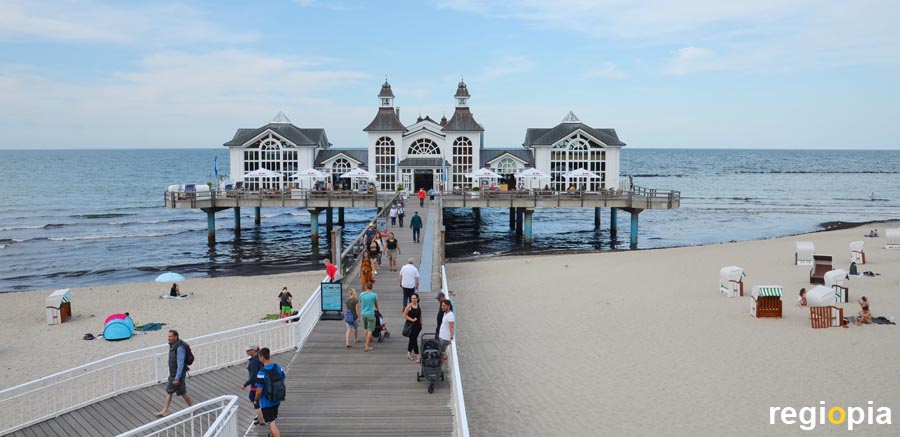
Sellin
The seaside resort Sellin is located on the steep coast of Rügen, which means that the village is above the beach and a long staircase leads down to the pier. The Selliner pier was opened in 1998 and resumes the bathing architecture of the 1920s. The original Sellin pier dates from this period and was repeatedly destroyed by ice and fire. There is a restaurant with outdoor dining and a diving bell on the pier. With 394 m, the Sellin pier is the longest on the island of Rügen.
On the splendid Wilhelmstrasse you will find spacious hotels in the typical spa architecture of Rügen. Other sights of Sellin include the Amber Museum, the small church Maria Meeresstern and the Warmbad from 1906.
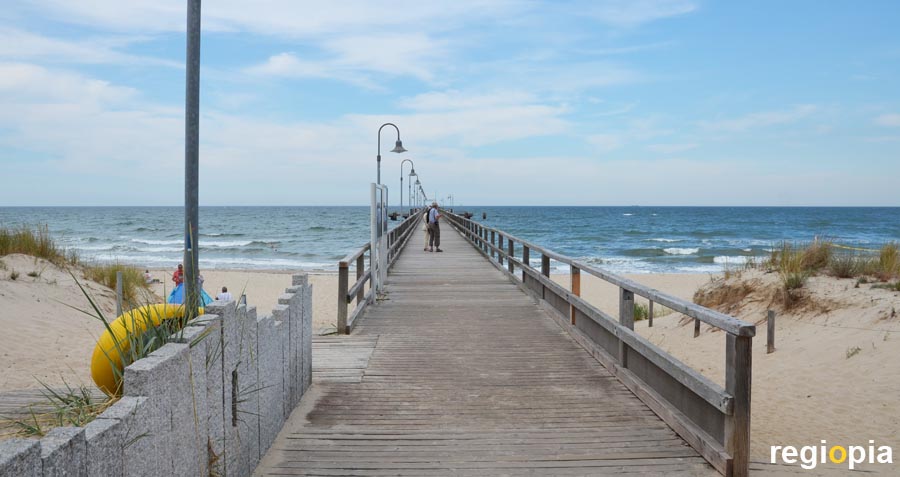
Göhren
The Göhren seaside resort is the easternmost on Rügen. It is about 2.5 kilometers from Baabe but on the same beach. The town of Göhren, like Sellin, lies above the beach. A small inclined elevator connects the town with the spa pavilion on the beach. Here is the 280 m long Göhren pier, which was built in 1993. The Göhren boardwalk is called the Amber Promenade and runs parallel to the beach as far as Baabe. Those who walk in the other direction come to the Nordperd peninsula. The headland has a roughly 60 m high cliff with beautiful hiking trails. If the weather is good, you can see the island of Usedom from here.
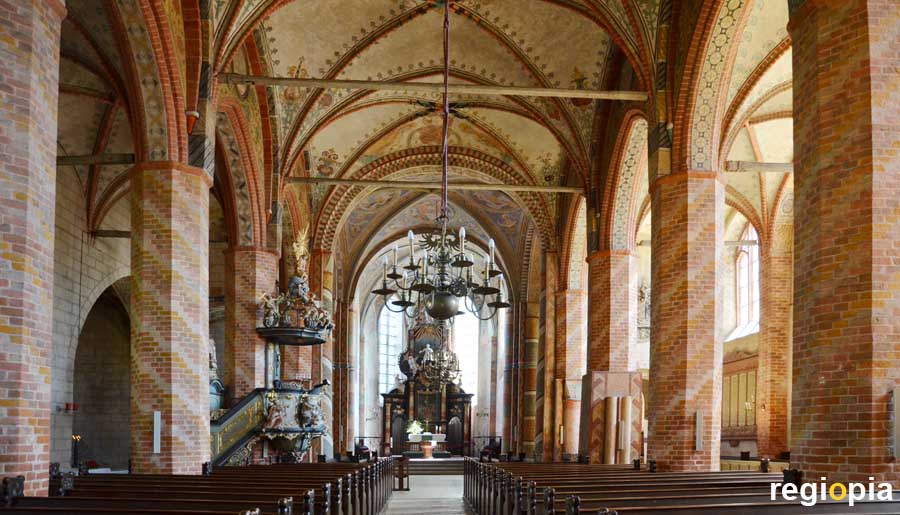
St. Mary church in Bergen
With around 15,000 inhabitants, Bergen is the largest city on the island of Rügen. The town is situated on a 60 m high hill, whereby the town center is not at the highest point. The Sankt Marien Church is the most famous sight of Bergen. Construction of the brick church started in 1180. The church was consecrated in 1193. However, the three-aisled hall was built in the 14th century in the Gothic style. The interior is really worth seeing, especially the richly decorated vaulted ceilings.
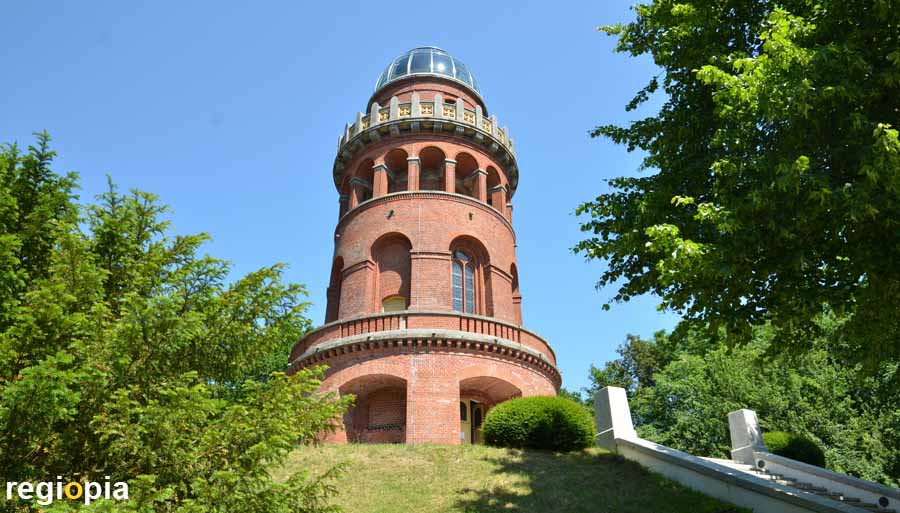
Ernst-Moritz-Arndt Tower
Another attraction of Bergen is the Ernst-Moritz-Arndt tower. The tower was built in honor of Ernst-Moritz-Arndt, the Rügen politician was a member of the Frankfurt National Assembly in the Paulskirche. He was considered a freedom fighter against Napoleon.
The 27 m high brick tower was completed in 1877. It stands on a 90 m high hill in the forest. From the observation deck you can see across the meadows and forests of Rügen with the Baltic Sea in the background.
Ernst-Moritz-Arndt Turm, Bergen
Map Rügen
ads
Travel Guide Ruegen
ads
ads


